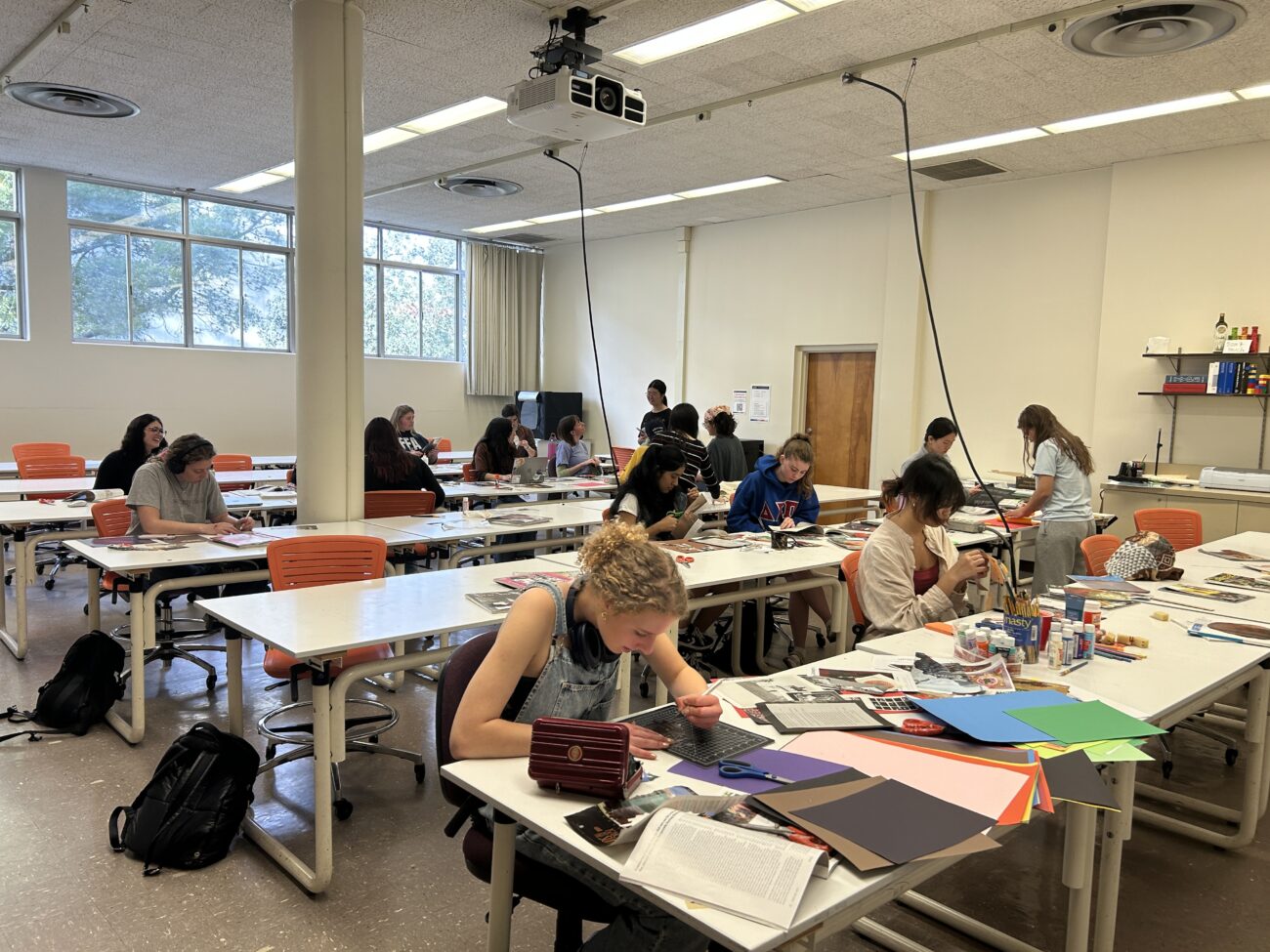The collage renaissance

Paper, scissors, glue and an old magazine. That is all you need to make a work of art in the world of collage.
As a medium, collage consists merely of cutting out images, figures and scraps from discarded magazines, newspapers or even fabric, and pasting them together. Once considered a craft for children, collage is experiencing a renaissance for adults, not only as an art form but as a community bonding tool, therapy and a Pinterest alternative.
On a Friday afternoon, down the heavily decorated halls of the Dexter art and design building, Club 34 and the Studio Art Club hosted a collage workshop in a studio classroom, where students could unleash their creativity through scraps of magazines.
Students scattered around the room, chatting in small cliques or working alone. Equipped with scissors and Elmer’s glue sticks, they hunched over the long gray desks, which were strewn with multicolored pages and scraps.

“I find that collage is very easy for anyone to do,” Maya Benham, a studio art junior and the treasurer of the Studio Art Club said as she cut out figures to add to her piece. “Paint can get a little expensive and a little messy, and people feel like they have to have experience, but I think collaging is a very easy way to get into the arts. I think it’s really fun, and you can definitely experiment with some new things.”
Chanti Medina, president of the Studio Art Club and studio art senior, explains that the two clubs decided to host this collaborative event as a community builder and a de-stressor during finals season. For most of the students who attended the workshop, collage isn’t their main medium but rather a tool for other forms of expression.
“I do use collaging as my process before painting to mix up and mash photos sometimes and move them around. That’s how I create my paintings sometimes,” Medina said.
Collaging can be a means of toying with composition in a way that lacks formal convention, as it is possible to manipulate the foreground, background and middle ground in irregular ways.
In many of the pieces the participants created, figures are seen in odd contexts, like walking into space or being dwarfed by huge food platters that once served as advertisements.
“I just am playing with different textures and patterns that I like and anything funky that I find,” Lillie Turinsky, a Cal Poly studio art senior said about the collage she was making that day. A mishmash of shapes and textures seemed to bounce off the page of the red-themed piece.
Rather than using a site like Pinterest, an online app often used for moodboarding, she enjoys toying with inspiration in tangible forms.
“I feel like it helps me build my inspiration for the projects that I’m working on outside of collage, like color palettes and schemes and different textures … I think it’s a good way to research and ideate,” she explained.
More than ever, collage is being used as something close to therapy where anyone can sit down and work with their hands just focusing on the creative project.
For sophomore Jamison Wallace, collaging is just that. It helps her relax and exercise in a different area of her brain that she would not normally use.
“I feel like as a graphic design major, I’m never not on the computer — other than just pencil sketching sometimes — so doing some good cutting up and pasting with glue and stuff, I feel like is good for me,” she said, her blonde curly hair pulled into a ponytail away from the X-acto knife in hand. “It definitely makes your brain work. I feel like it’s the artistic version of touching grass.”
To others, it’s the opportunity for human connection that makes collage so special.
At the Club 34 and Studio Art workshop, Turinsky sits with two friends at the end of a table near the center of the room as she explains her love of collage as a social activity. Her friends giggle and compare pieces as she said, “I think it’s fun because we get time to be creative and also have our time to talk. It’s a good bonding time.”
Regardless of how collage is being used, it is finding a new respected place in the creative world.
“People are delving into crafting as an art form, where it used to be taken less seriously,” Turinsky said. “Now you have the ability to make something that’s quote-unquote real art.”

